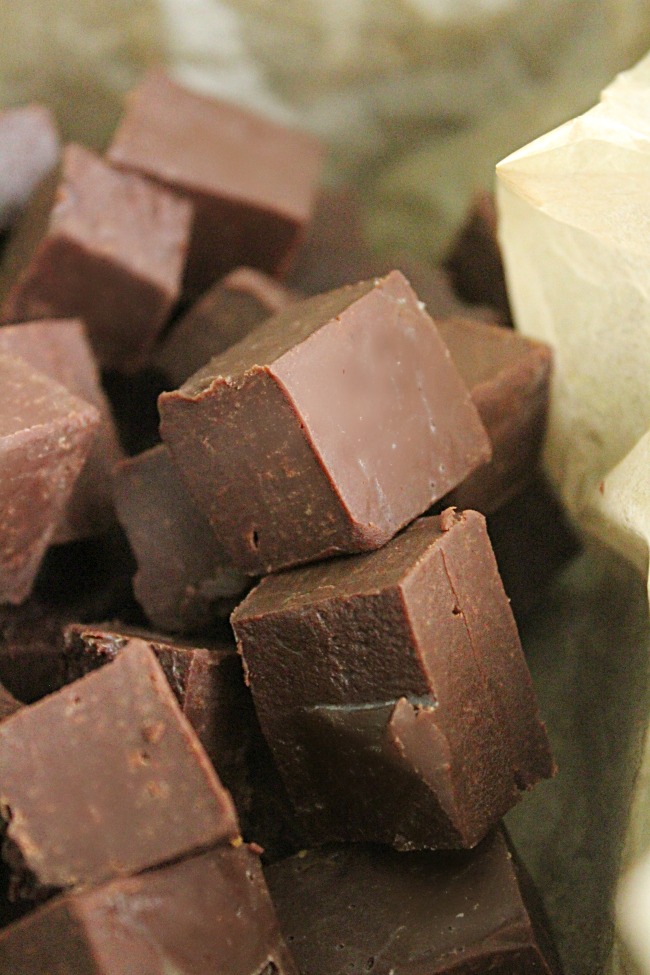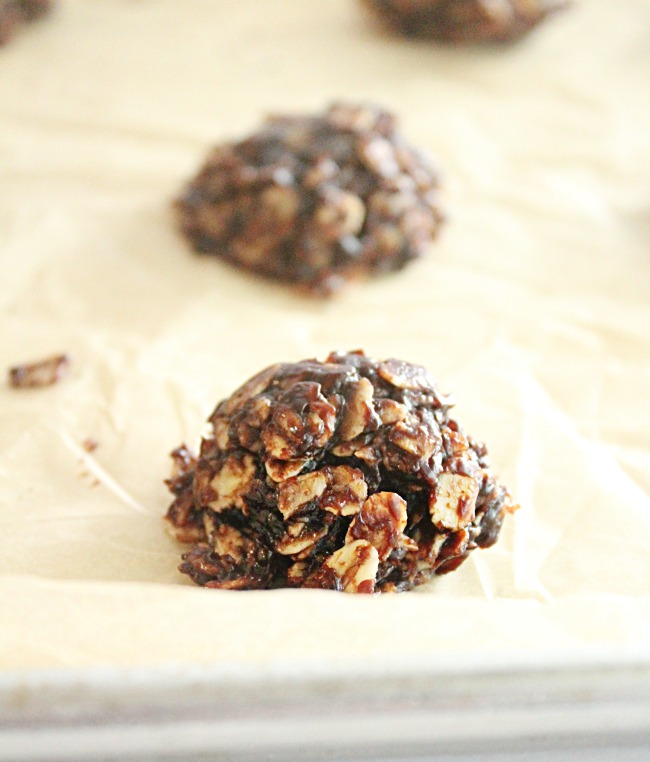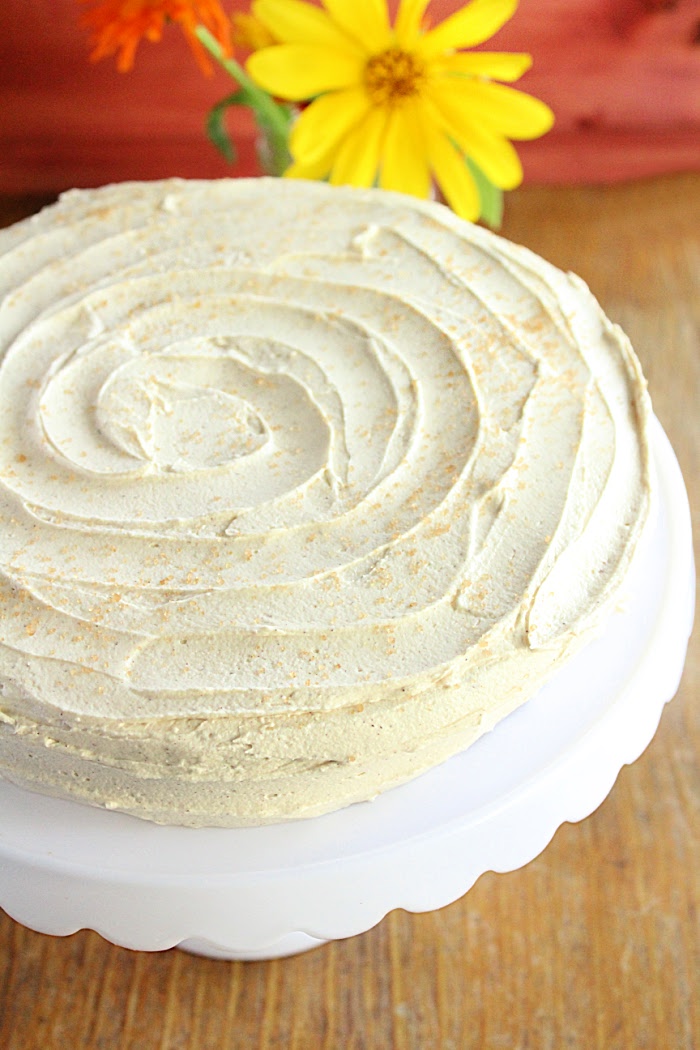The Best Oils For Crisp, Golden Deep Frying (Taste Over Health)
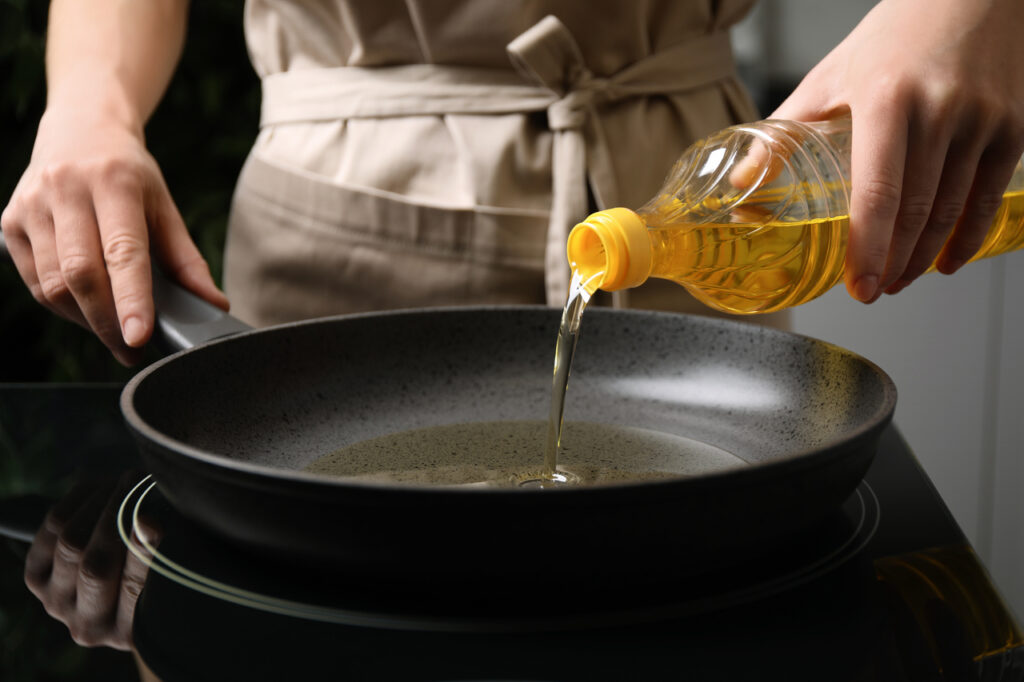
The oil you pick is more than just a cooking medium. It directly affects flavor, aroma, and the all-important texture that makes fried food addictive. A clean, neutral oil allows the food to shine, while one with subtle notes can complement the seasoning. Just as important, oil determines whether a fry tastes crisp and light or heavy and greasy.
Oil also controls how food looks. That golden crust comes from the Maillard reaction, which develops properly when oil stays stable at high temperatures. If the oil breaks down too quickly, you’ll get uneven browning, limp crusts, and off-flavors. In short, choosing the right oil is the first step to frying that delivers on taste and presentation.
Impact on Flavor and Texture
Flavor transfer is one of the biggest concerns when frying. Neutral oils ensure fries don’t taste like chicken from the previous batch, while oils with mild accents can enhance dishes if used deliberately. The wrong oil, however, can overwhelm delicate foods or impart bitterness when overheated.
Texture, too, comes down to oil chemistry. Stable oils allow a quick crust to form, keeping moisture locked in without turning the food soggy. This is why fried items cooked in suitable oils stay crisp longer and don’t feel overly greasy.
Role in Golden Color and Crispiness
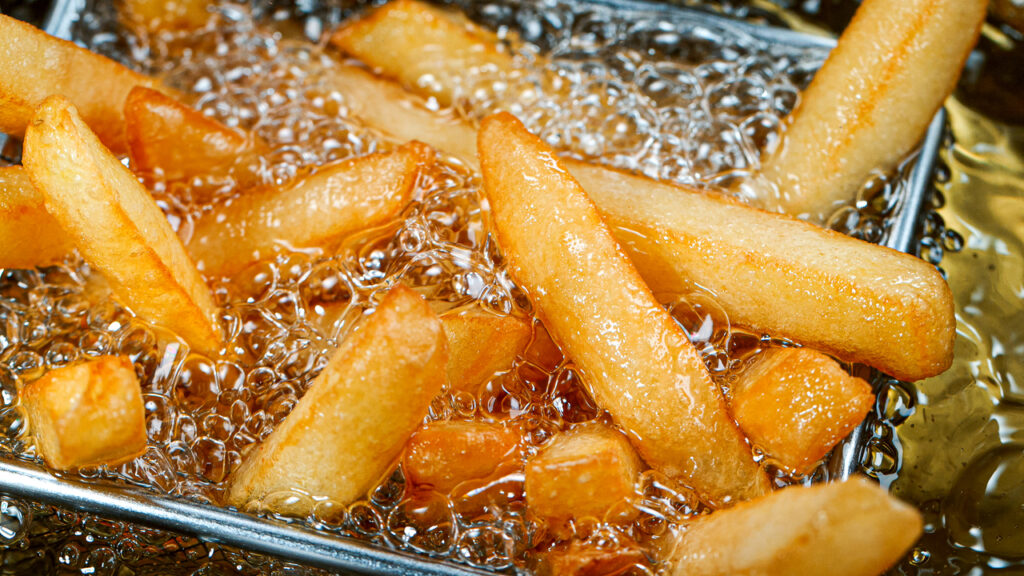
Golden color signals not just doneness but quality. Oils with higher stability allow sugars and proteins in the food to brown evenly, giving you that café-style fried finish. Oils that degrade release compounds that interfere with browning, leading to pale or uneven results.
Crispiness is all about how efficiently the oil transfers heat. Good frying oils create a dry, shattering crust that resists going limp. Poor oils, by contrast, often leave behind a greasy coating that masks flavor and shortens shelf life.
Understanding Smoke Point and Stability
The smoke point is the threshold where oil begins to visibly smoke and chemically break down. For deep frying, you need oils that can comfortably handle 350–375°F without burning. Using oils with lower smoke points risks off-flavors, acrid aromas, and even harmful compounds.
Stability is about how long an oil can last under repeated heating. Oils rich in monounsaturated or saturated fats hold up well across multiple batches, while those high in polyunsaturated fats oxidize quickly and degrade faster. For anyone frying regularly, stability matters as much as smoke point.
Why High Smoke Point Oils Perform Better
High smoke point oils stay clean longer, which means food cooks evenly without unpleasant notes creeping in. They allow you to maintain the high temperatures needed for crisp exteriors and tender interiors. This is why professional kitchens often rely on refined oils—they’re engineered to handle heat without compromise.
Thermal Stability During Repeated Frying
When you fry multiple batches, oils are exposed to constant heating and cooling. Stable oils resist oxidation and polymerization, which extends their usability and ensures consistent flavor. Less stable oils, on the other hand, develop a burnt smell, foam excessively, and produce sticky residues that cling to food.
Flavor Neutrality vs. Distinct Taste
Some oils are meant to stay in the background. Neutral options like avocado or rice bran let the ingredients take center stage, making them perfect for fries, doughnuts, or tempura.
Other oils bring their own subtle character. Peanut oil adds a light nuttiness that pairs beautifully with fried chicken, while refined olive oil gives a hint of fruitiness that works with Mediterranean-inspired dishes. The trick is knowing when to enhance and when to stay neutral.
Fat Composition and Frying Behavior
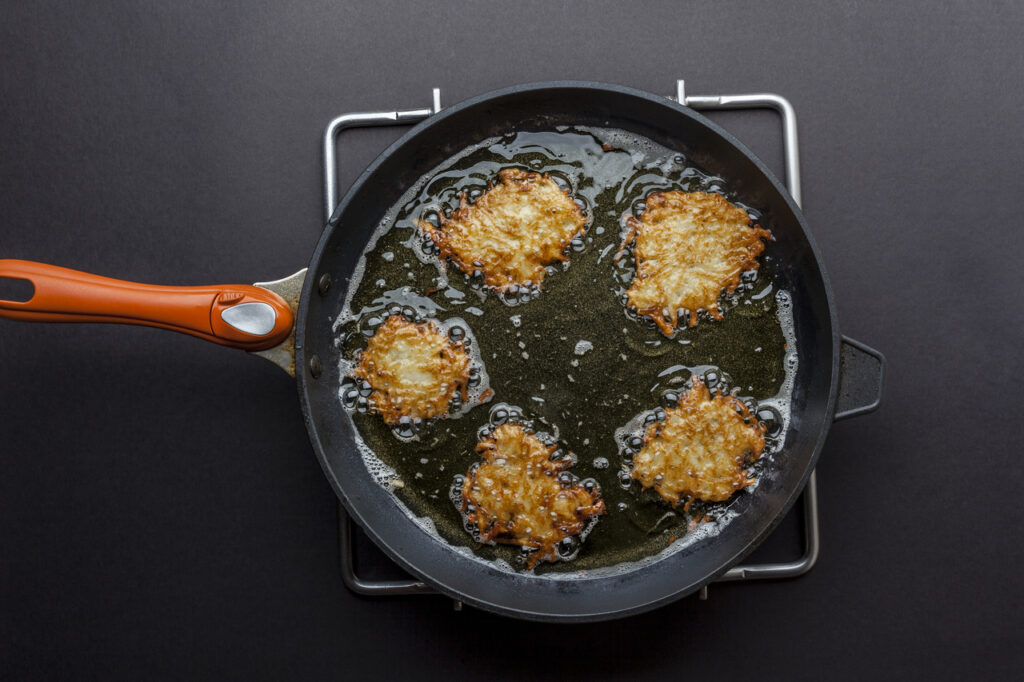
The balance of saturated, monounsaturated, and polyunsaturated fats determines how an oil reacts under heat. Saturated fats are highly stable, which is why ghee or beef tallow hold up so well in hot frying. Monounsaturated fats strike a good balance, making oils like refined olive or avocado reliable.
Polyunsaturated fats, while beneficial in raw use, break down rapidly when heated, producing rancid flavors and potentially harmful compounds. That’s why oils with a high polyunsaturated profile aren’t ideal for deep frying.
Oxidation Risks and Off-Flavors
Once oil oxidizes, it not only tastes off but also affects texture and aroma. Oxidized oils produce sticky residues, cause excessive foaming, and can even make food look darker without delivering crispness. Choosing oils with the right fat composition minimizes these risks.
Best Oils for Crisp, Golden Frying
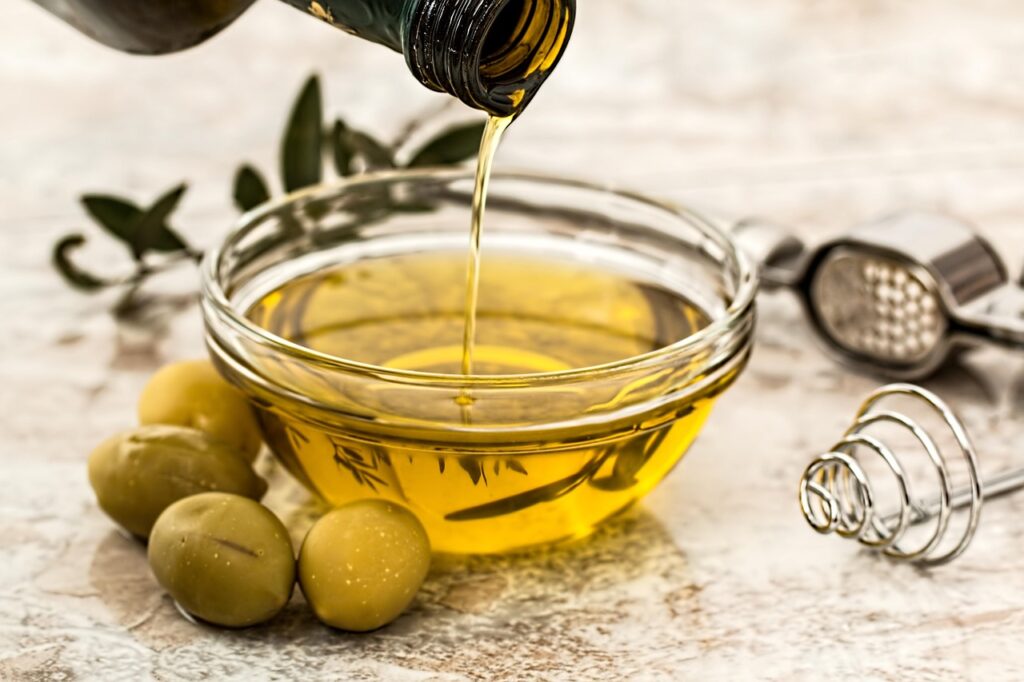
- Avocado oil: Known for a very high smoke point and clean flavor, making it an excellent all-purpose frying choice.
- Refined olive oil: Offers mild fruitiness with improved heat tolerance, perfect for Mediterranean-inspired frying.
- Peanut oil: Stable and nutty, it’s ideal for poultry, seafood, and doughnuts.
- Rice bran oil: Neutral and resilient, it produces clean, light-tasting fried foods.
- Clarified butter (ghee): Adds richness and a signature buttery depth, particularly good for pastries and snacks.
Oils That Fall Short in the Fryer
Unrefined oils with low smoke points, like extra-virgin olive or flaxseed, can’t withstand frying temperatures without smoking or breaking down. Strongly flavored oils, such as sesame or walnut, overpower delicate foods and are better saved for finishing touches.
These oils shine in other roles, salads, drizzles, or sautéing, but push them into frying, and the results often disappoint both in taste and texture.
Getting the Most Out of Your Oil
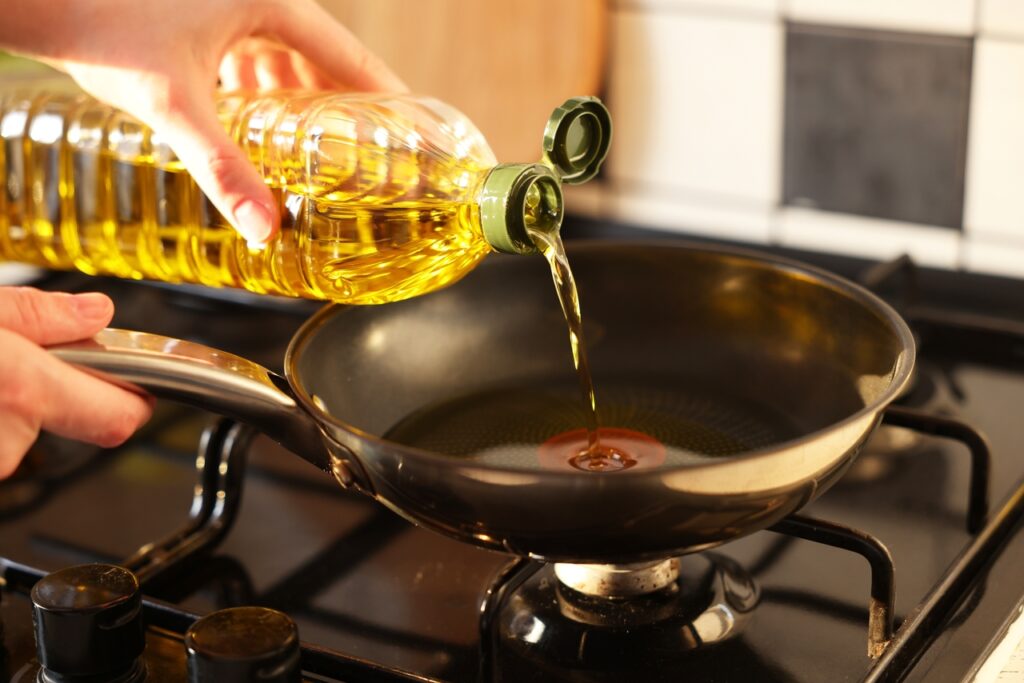
Even the best oil won’t perform if it’s misused. Keep frying temperatures steady between 325 – 375°F, avoid crowding the fryer, and always monitor with a thermometer. Strain oil after each use to remove crumbs that accelerate breakdown, and store it in a cool, dark place to slow oxidation.
Balancing taste with health concerns also matters. While refined oils handle heat best, it’s wise to rotate them with naturally stable fats like ghee or coconut oil for variety. With mindful use, you can maximize both flavor and longevity, ensuring every fry comes out crisp, golden, and satisfying.
References
- Choosing the best oils for Deep Frying and Stir Frying – kaleesuwari.com
- Best Cooking Oils For Deep Frying And 4 Oils You Must Avoid At All Cost – healthandme.com
